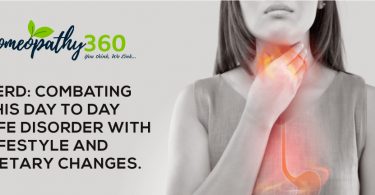
Abstract:
The ocean of symptoms on which MateriaMedica is built upon is so vast that, it is a highly time consuming and tedious to make use of it without aproper understanding.This dilemma can be tackled using so called keynote symptoms, whose objective is to lend a helping hand to the practitioner, which is guiding and characteristic in the individuality of each remedy and thus utilize more efficiently the symptomatology of the ever so large Homoeopathic Materia Medica with great certainty and ease.
Keywords:
Homoeopathy, keynote, symptom, MateriaMedica.
Introduction:
As a Homoeopath one of the greatest challenges is the ever increasing volume of information that is being produced or discovered every second. This especially holds true in case of Material Medica where each passingsecond new information in the form of a new proved drug or new symptom of an already existing drug is getting added one after the other.
Keynote may be seen as a predominant or standing out feature that help the physician to come to a similimum without being engulfed in the ocean full of seemingly similar remedies that he one may find when prescribing.
So in simple terms keynote symptoms distinguish the remedies that it portrays from all other possible remedies that might pop-out when a physician tries to find a similimum.
History:
Dr Henry N Gurnsey is said to be the inventor of the term “keynote system”. But Dr Gurnsey himself says it’s not a new invention but it’s strictly Hahneminian. An old ideology of Hahnemann that was given an appropriate name by Dr Gurnsey.[1]
In his book “Keynotes & characteristics with comparison of some of the leading remedies of Materia Medica”, Dr HC Allen has made the terminology much more popular and widely-accepted.[2]
§153 in fifth edition of Organon of medicine which can be called as the Bible of Homoeopathy quotes ‘The more striking, singular and uncommon and peculiar (characteristic) signs and symptoms of the case of disease are chiefly and must solely to be kept in view; for it more peculiarly, these very similar ones in the list of symptoms of selected medicine must correspond in order to constitute it most suitable foe effecting the cure. The more general and undefined symptoms; loss of appetite, headache, debility, demand but little attention when if that vague and indefinite character; symptoms of general nature observed in every disease and drug’. [3]
Which translates to Characteristic keynote symptoms and there importance and use when one wants to find a similar remedy.
The word keynote:
In simple words “keynote” in music is the most important degree of the scale, serving as the focus for both melody and harmony. In other words it is the first note of a musical scale upon which a musical piece’s tonal progression is based.
So if you have an idea about the keynote you can have an idea about the entire music, how it’s going to be.
The same applies for keynote symptoms as in, it is that symptom the gives the entire remedy a differentiating meaning, and helps to get to the remedy fastest.
Personality of keynote:
The keynote is a predominating symptom/ features which direct attention to one particular drug or a group of drugs
When the prescriber becomes familiar with these keynotes or characteristic of remedies he will be able to find more quickly the remedy in a given case because the field of selection has been narrowed.
When such a keynote in the symptom of a case is found it immediately suggests or recalls the physician to a medicine or a group of medicine having such a similar keynote. Reference to repertory and Materia Medica will verify the selection and help to select a remedy if confusion arises.
There is usually something peculiar in the case, some striking combination of symptoms that directs the attention to certain drug and this is what Dr Guernsey called a keynote. It’s synonymous with Hahnemann’s characteristics.[1]
A good physician will be able to find out this peculiar characteristic keynote with his knowledge in case taking and experience, hence making the process of prescription easy and effective.
A characteristic/keynote is a generalization drawn from the peculiar symptoms by logical deduction. So they cannot be determined until a complete analysis of all the symptoms of the case is done for the purpose of comparison.
Examples of keynote books:
- Keynotes and characteristics with comparisons of some of the leading remedies of the MateriaMedica with some of the nosodes, by H C Allen.
- A synoptic key of MateriaMedica, by C M Boger.
- A primer of MateriaMedica by T F Allen
- Characteristic MateriaMedica by W H Burt.
- Keynotes and redline symptoms of MateriaMedica by A V Lippe.
- Characteristic of Homoeopathic MateriaMedica by M E Douglass.
Few examples of keynote:
- Sulphur- standing is the worst position for sulphur patients; they cannot stand.[2][4]
- Euphrasiaofficinalis- profuse acrid lachrymation, with profuse, bland coryza. Eyes water all the time.[2][4]
- Pulsatilla- symptoms ever changing. Weeps easily. Thirstlessness.[2][4]
Conclusion
As seen Homoeopathy is a system that considers the whole individual in disease, rather than just considering an individual part or area to be diseased or functioning abnormally.
Also the fact that the system sees for characteristic symptoms or signs that the patient suffers from uniquely and not generally experienced by others suffering from a similar form of disease is a unique but highly efficient approach.
In many a conditions a characteristic keynote symptom may be the only thing that help the physician to get to the best indicated remedy, when no other symptoms help him to narrow down to a single remedy. Also the keynote helps to reduce the time needed by physician to narrow down the list of possible remedies.
Dr C Hering – Every stool must have at least 3 legs; if it is to stand alone likewise select at least 3 keynotes as the basis of prescription. But it is wise to give the symptomatic stool a broad base and as many legs as possible.[5]
Dr Charles G Raue – Characteristic symptoms individualize both disease and the drug. It belongs exclusively to a single remedy and cautioned not to diagnose a remedy on one symptom only, be it ever so characteristic. They define the circle of remedies out of which we must select.
Thus in this ever enlarging ocean of Materia Medica,keynotes seems to be an indispensable method to intelligently and successfully use our voluminous symptomatology to the best of capability, but as with any method correct prescribing will always remain an art that the physician has to fulfil.
References:
- Guernsey HN. The Application of the Principles and Practice of Homoeopathy to Obstetrics and the Disorders Peculiar to Women and Young Children. Boericke&Tafel; 1874.
- Allen H. C. Keynotes and Characteristics with Comparisons of Some of the Leading Remedies of the MateriaMedica with Bowel Nosodes, 8th Edn.: B. Jain Publishers (P) Ltd; 1898.
- Hahnemann S, Dudgeon R.E (ed.). Organon Of Medicine. 5th Edn: B. Jain Publishers(p) LTD:1970
- Hahnemann S, MateriaMedicaPura, 1st Edn: Translated by Dudgeon R.E, B Jain Publishers (p)LTD: Kuldeep Jain.1833,Vol. II.
- Knerr CB, Hering C. A Repertory of Hering’s Guiding Symptoms of our Materia Medica. FA Davis; 1896.
- Raue CG, editor. Annual Record of Homoeopathic Literature. Boericke&Tafel.; 1870.





